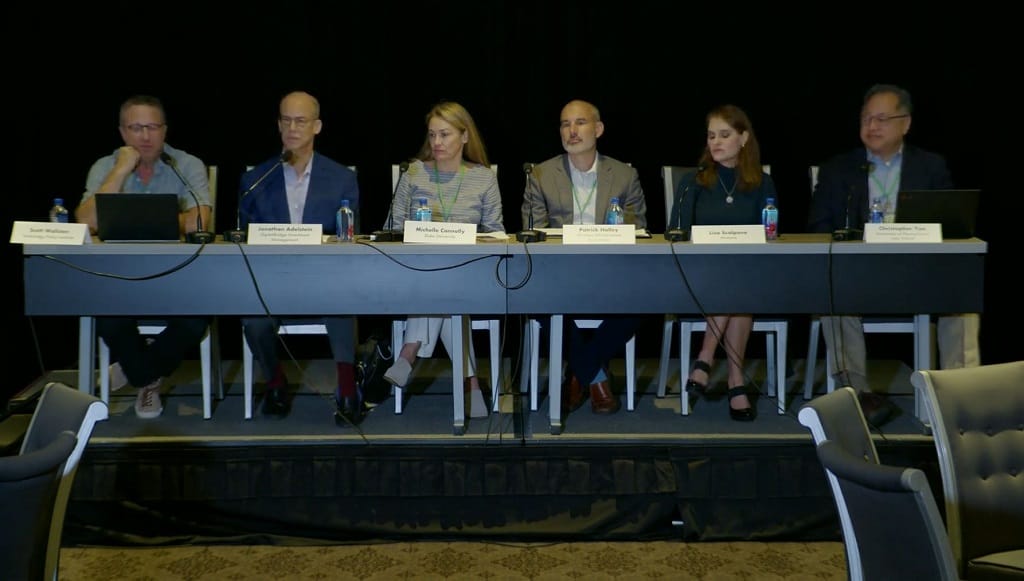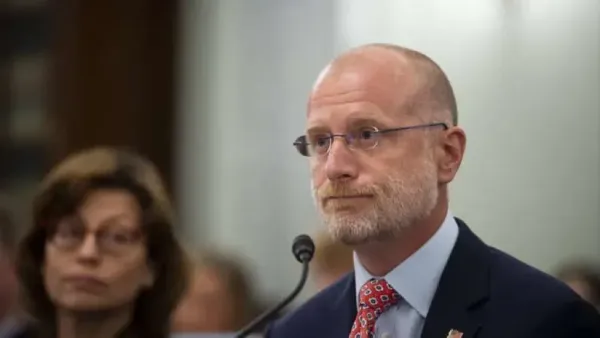Panelists Take Issue with Government Preference for Fiber
‘Advertising around gig speeds is doing tremendous damage to our public policy.’
Ahmad Hathout

ASPEN, Colorado, August 16, 2022 – The federal government’s preference for fiber technologies to bridge the digital divide was a point of contention on a conference panel on Tuesday, as panelists urged the public sector to give nascent and wireless technologies an opportunity to develop and show their potential.
The Commerce Department’s National Telecommunications and Information Administration has $42.5 billion to deliver to the states for broadband infrastructure from federal infrastructure legislation, and its progenitors have clearly stated that they prefer hard fiber technology. Last week, the Federal Communications Commission denied nearly $900 million in subsidies to SpaceX’s Starlink satellite broadband project partly because it is still a developing technology.
But on a TPI Aspen conference panel made up of representatives from private industry, trade associations, and academia, the message was to give these technologies a chance.
“Let’s let these nascent technologies develop,” said Lisa Scalpone, head of country development for Amazon’s Project Kuiper, its low-earth orbit constellation institution that is preparing to launch thousands of broadband satellites in the sky.
“There may be things about wireless technology that are actually better in some ways than wireline technology — it may not be speed or capacity…it could be portability…that’s what a low-cost, LEO antenna terminal can do,” she said.
Similarly, Christopher Yoo, a professor of law in communications and computer information science at the University of Pennsylvania, said the nation should be “openly experimental in what we’re doing, because in the 1970s we didn’t see the technology future…the question is can we create an environment where we allow brilliant experiments to take place and we find out what actually works.”
Yoo added that he thinks the “advertising around gig speeds is doing tremendous damage to our public policy.
“It’s become, you have to match it because it’s been advertised that way…and that’s part of the drive towards fiber. In a world where teleconferencing…requires eight to 12 meg per (second), maybe you get 50 in a multi-screen households, but the idea you need a gig is what’s killing the case for fixed-wireless and satellite.”
Those comments are in stark contrast to the push for gigabit speeds by the fiber industry and the private sector. Earlier this summer, AT&T’s vice president of broadband network product management said the company has seen a tremendous growth in gigabit speed demand. Meanwhile, as Congress was debating infrastructure legislation that would eventually spawn the NTIA’s $42.5 billion Broadband Equity, Access and Deployment program, the Fiber Broadband Association pushed the focused on gigabit speeds as it lobbied for a fiber preference over other technologies.
“The policymakers think they know best — one technology is better than all the rest, and I think that’s given away in the slogan: future-proof…we know the future, we the government know what technologies are going to work forever,” Jonathan Adelstein, managing director and head of global policy and public investment at DigitalBridge Investment Management, who in his previous role as head of the Wireless Infrastructure Association was outspoken about the need to support a diversity of technologies to bridge the digital divide.
Adelstein – who’s company invests in major fiber infrastructure provider Zayo and has seen providers grappling with supply chain problems and the build delays that arise from that – said he’s concerned about the focus on one technology when there are bottlenecks in materials and equipment for projects.










Member discussion